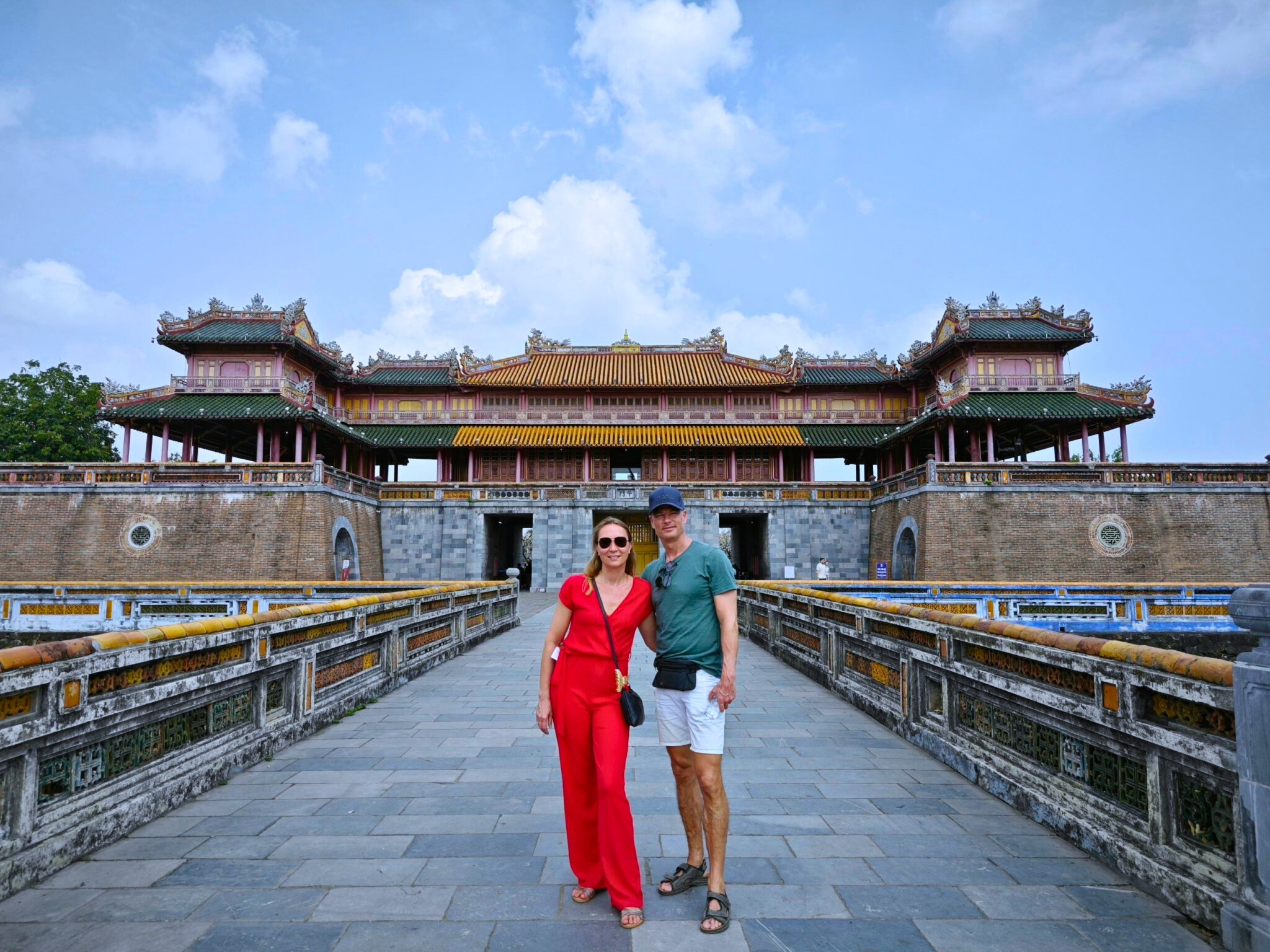Hue Food: 10 Delicious Dishes You Must Try in Vietnam’s Imperial City
When it comes to Vietnamese cuisine, Hue food stands in a league of its own. As a UNESCO World Heritage site and former imperial capital, Hue offers not just stunning architecture and rich history, but also a culinary tradition that will captivate your taste buds. Having explored Vietnam’s food scene extensively, I can confidently say that Hue cuisine represents the pinnacle of Vietnamese gastronomy, combining royal sophistication with bold Central Vietnamese flavors.
What Makes Hue Food Special?
Unlike the lighter flavors of Southern Vietnam or the Chinese-influenced dishes of the North, Hue food is characterized by its complex layers of taste, vibrant colors, and meticulous presentation. The city’s imperial past means many dishes were originally created for royalty, resulting in recipes that emphasize both visual appeal and extraordinary flavor profiles.
The cuisine here features a perfect balance of spicy, sour, salty, and sweet elements. Central Vietnam’s climate and the Perfume River’s abundance have shaped these distinctive flavors. When you’re planning your Central Vietnam tour, dedicating time to explore Hue’s food scene is absolutely essential.
1. Bun Bo Hue – The King of Noodle Soups
No discussion of Hue food can begin without mentioning Bun Bo Hue, the city’s most famous export. This isn’t just another noodle soup – it’s a complex symphony of flavors that perfectly encapsulates Central Vietnamese cuisine.
“Bun Bo Hue is to Hue what Pho is to Hanoi, but with triple the complexity and double the flavor punch.” – Local food expert
The broth, simmered for hours with beef bones, lemongrass, and fermented shrimp paste, creates a foundation that’s simultaneously rich, spicy, and aromatic. What sets authentic Bun Bo Hue apart includes:
- Thick rice vermicelli noodles (bun) that perfectly absorb the flavorful broth
- Multiple meat components: beef shank, pork knuckle, and Vietnamese pork sausage (cha lua)
- Fresh herbs including banana blossoms, mint, and perilla leaves
- A distinctive chili-lemongrass oil that adds both color and heat
For the best experience, head to local favorites like Bun Bo Hue Ba Tuyet on Nguyen Cong Tru Street, where recipes have been passed down through generations.
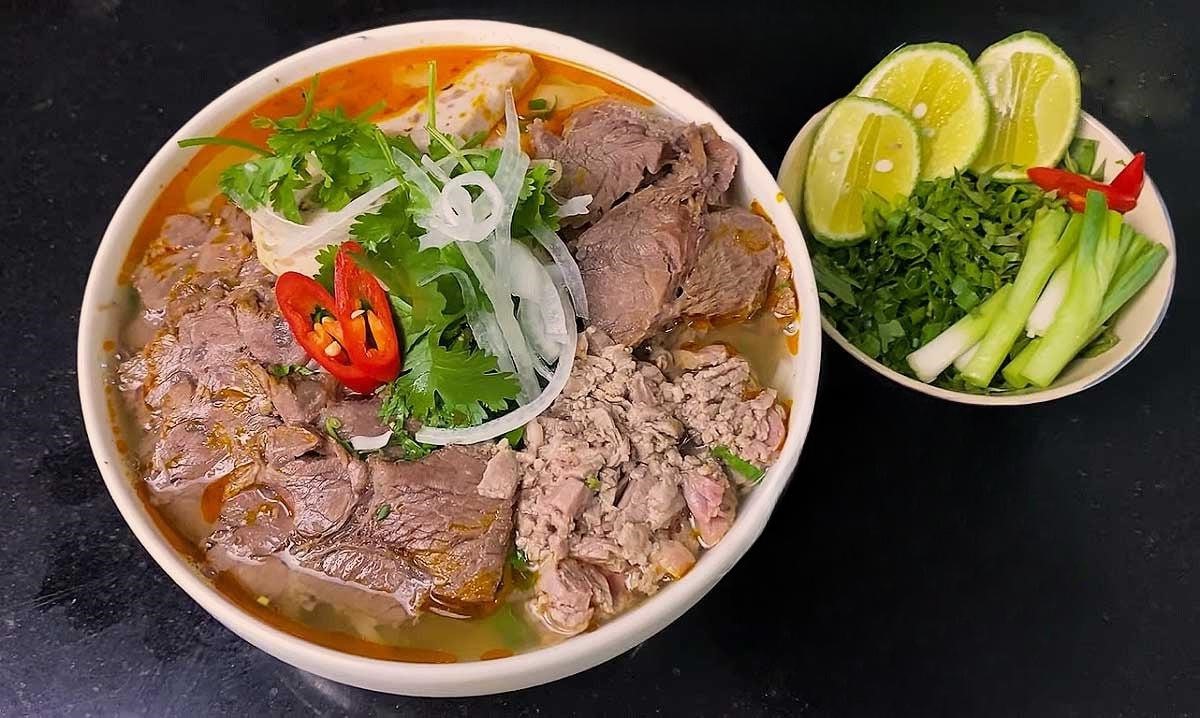
2. Com Hen – Clam Rice
Com Hen tells the story of Hue’s resourceful past. Originally a breakfast dish for poor laborers, it has evolved into one of the city’s most beloved specialties. This seemingly simple dish combines cold rice with tiny clams from the Perfume River, creating magic through its complex preparation.
Each bowl includes:
- Baby clams sautéed with garlic and chili
- Crispy pork rinds for texture
- Roasted peanuts
- Fresh herbs and banana flower
- A special clam broth served on the side
Pro tip: Mix everything thoroughly before eating to ensure each bite contains all the elements. The interplay of temperatures, textures, and flavors makes this humble dish extraordinary.
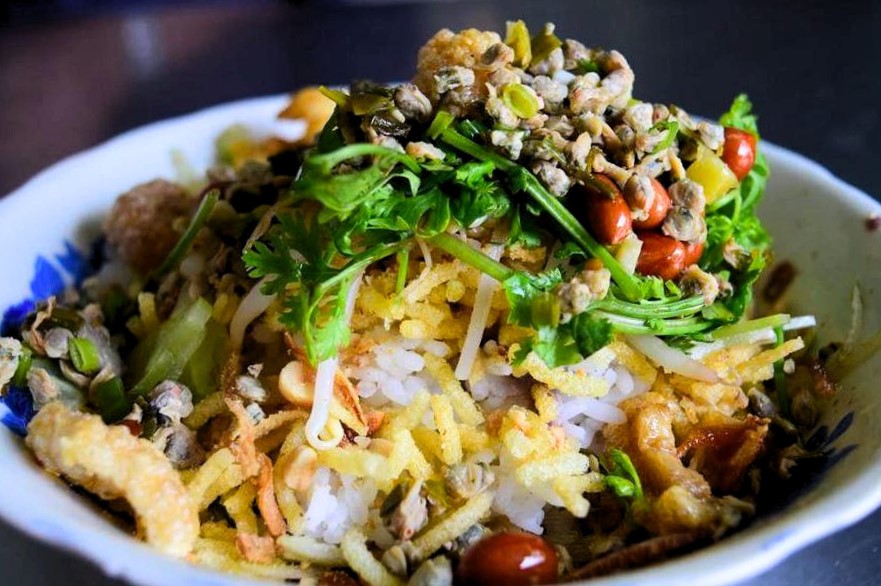
3. Banh Khoai – Hue’s Royal Pancake
Often compared to its Southern cousin Banh Xeo, Banh Khoai is distinctly different and uniquely Hue. These crispy rice flour pancakes are smaller, thicker, and packed with more filling than their counterparts elsewhere in Vietnam.
| Banh Khoai (Hue) | Banh Xeo (South) |
|---|---|
| Smaller, personal-sized | Large, meant for sharing |
| Thicker, crispier texture | Thinner, more delicate |
| Served with peanut sauce | Served with fish sauce |
| Contains quail eggs | Usually chicken eggs |
The best Banh Khoai shops, like Hanh Restaurant on Pham Ngu Lao Street, serve these golden beauties with an impressive array of fresh vegetables and herbs. The contrast between the crispy exterior and tender filling of shrimp, pork, and bean sprouts creates an unforgettable texture experience.
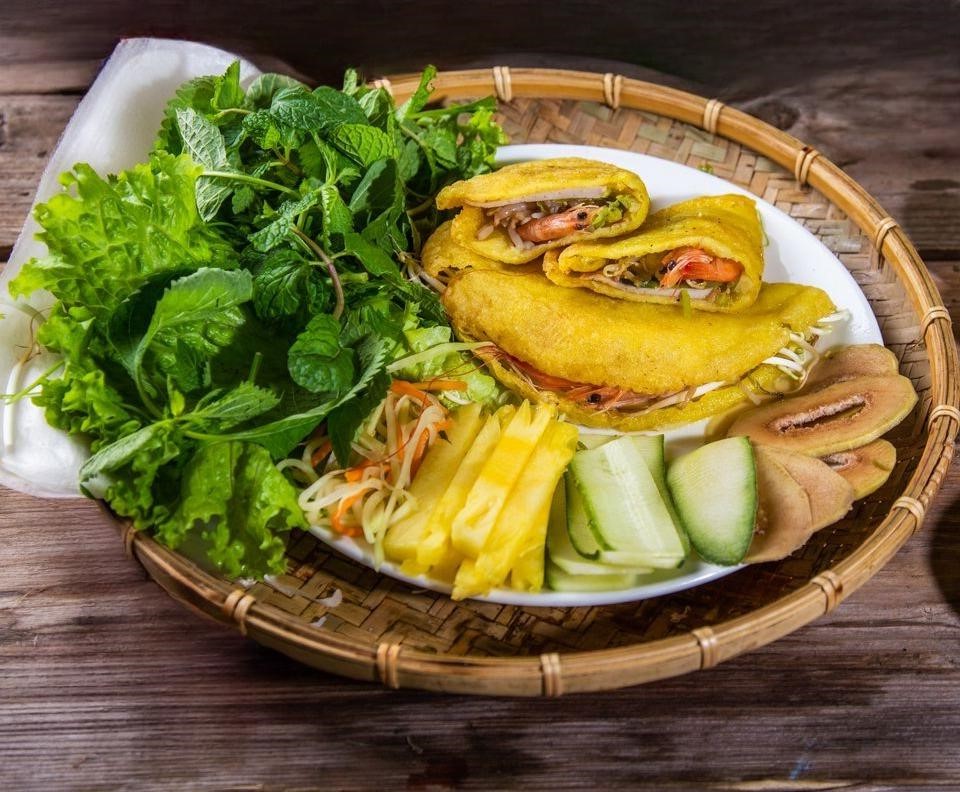
4. Nem Lui – Grilled Pork Skewers
Nem Lui showcases Hue’s mastery of grilled meats. These flavorful pork skewers are seasoned with garlic, shallots, and a hint of sugar, then grilled over charcoal until perfectly caramelized.
What makes Nem Lui special is the interactive dining experience. You’ll wrap the grilled meat in rice paper with:
- Fresh lettuce and herbs
- Pickled vegetables
- Green banana and star fruit slices
- A special peanut-based dipping sauce
This DIY approach to dining perfectly embodies Vietnamese food culture, where meals are social experiences meant to be shared and savored.
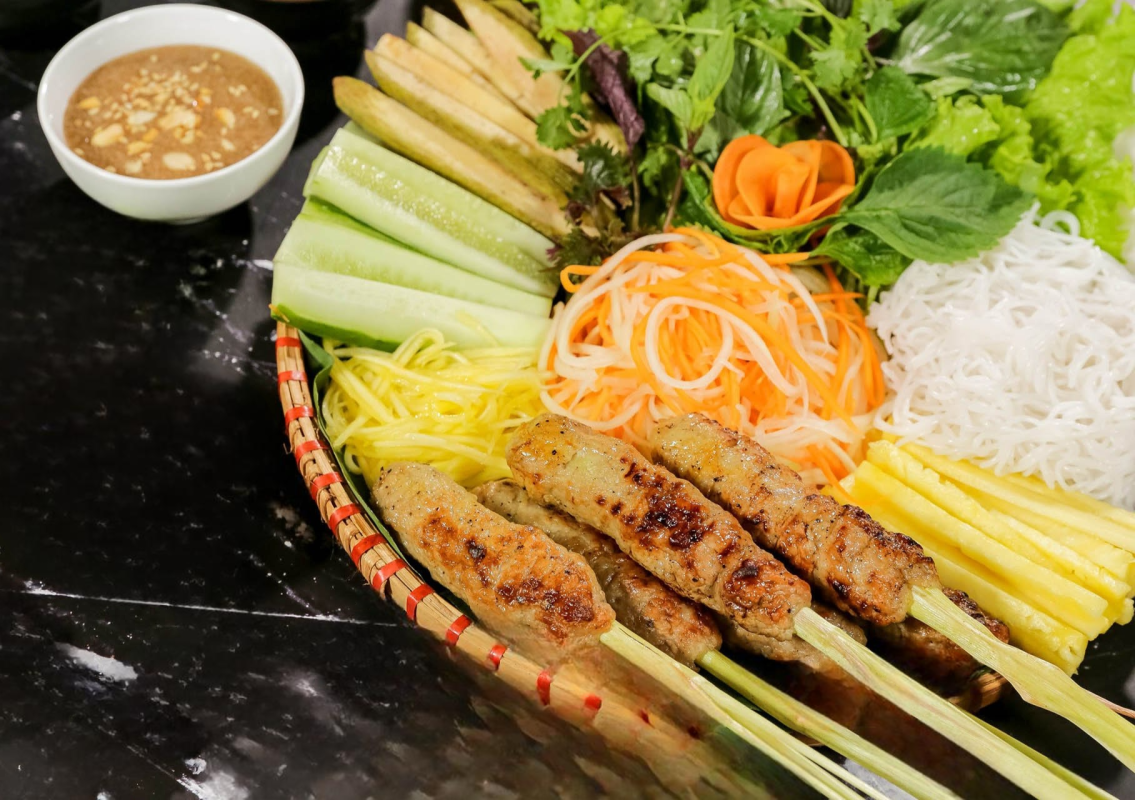
5. Banh Beo – Delicate Steamed Rice Cakes
These tiny, delicate steamed rice cakes represent the refinement of Hue imperial cuisine. Banh Beo literally translates to “water fern cake,” named for their resemblance to duckweed floating on water.
Each small dish contains a thin layer of steamed rice batter topped with:
- Dried shrimp powder
- Crispy pork skin cracklings
- Scallion oil
- Sweet fish sauce for dipping
The art lies in achieving the perfect texture – silky smooth yet firm enough to scoop with a spoon. Many visitors initially underestimate these simple-looking dishes, but one taste reveals why they’ve been cherished for centuries.
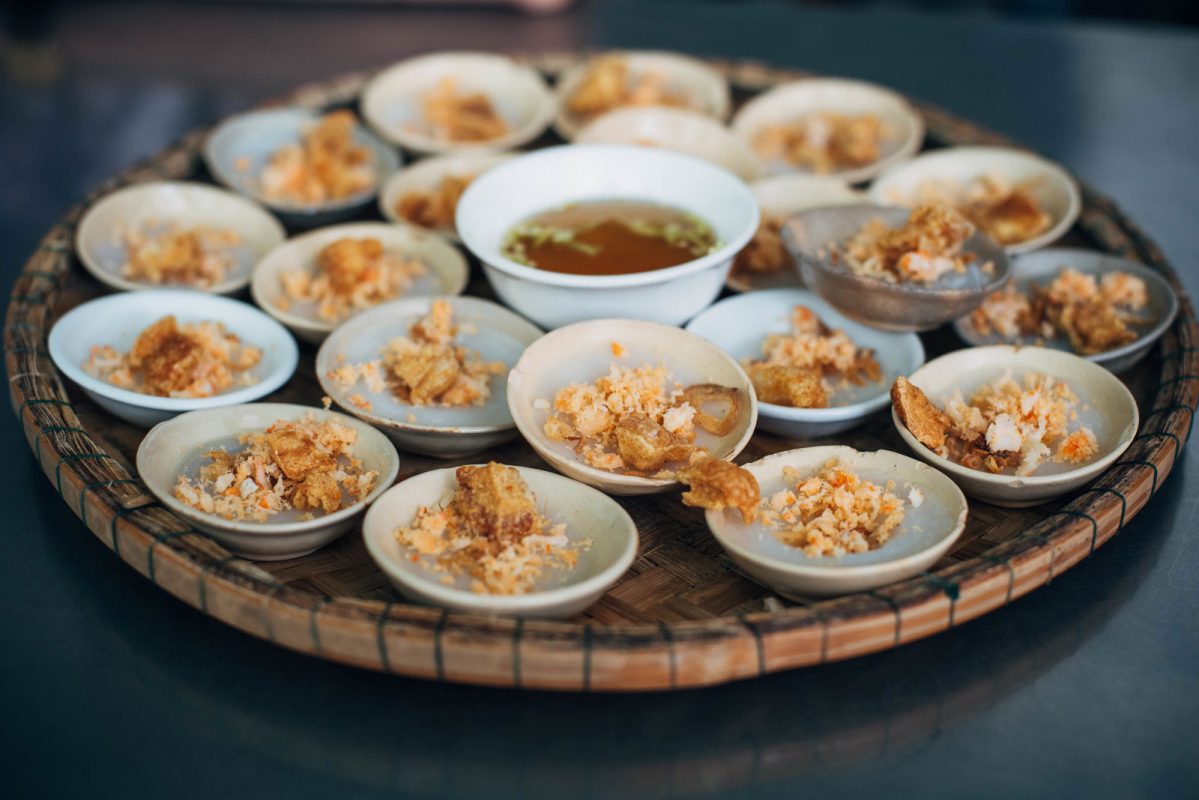
6. Bun Thit Nuong – Grilled Pork Vermicelli
While available throughout Vietnam, Hue’s version of Bun Thit Nuong stands apart due to its distinctive marinade and preparation method. The pork is marinated with lemongrass, shallots, and a touch of shrimp paste – a ingredient that adds umami depth unique to Central Vietnam.
A proper bowl includes:
- Perfectly grilled pork with caramelized edges
- Fresh rice vermicelli
- Crispy spring rolls (nem ran)
- Abundant fresh herbs and lettuce
- Pickled vegetables
- The essential nuoc cham dipping sauce
For an authentic experience, visit the street food stalls near Dong Ba Market, where vendors have perfected their recipes over decades.
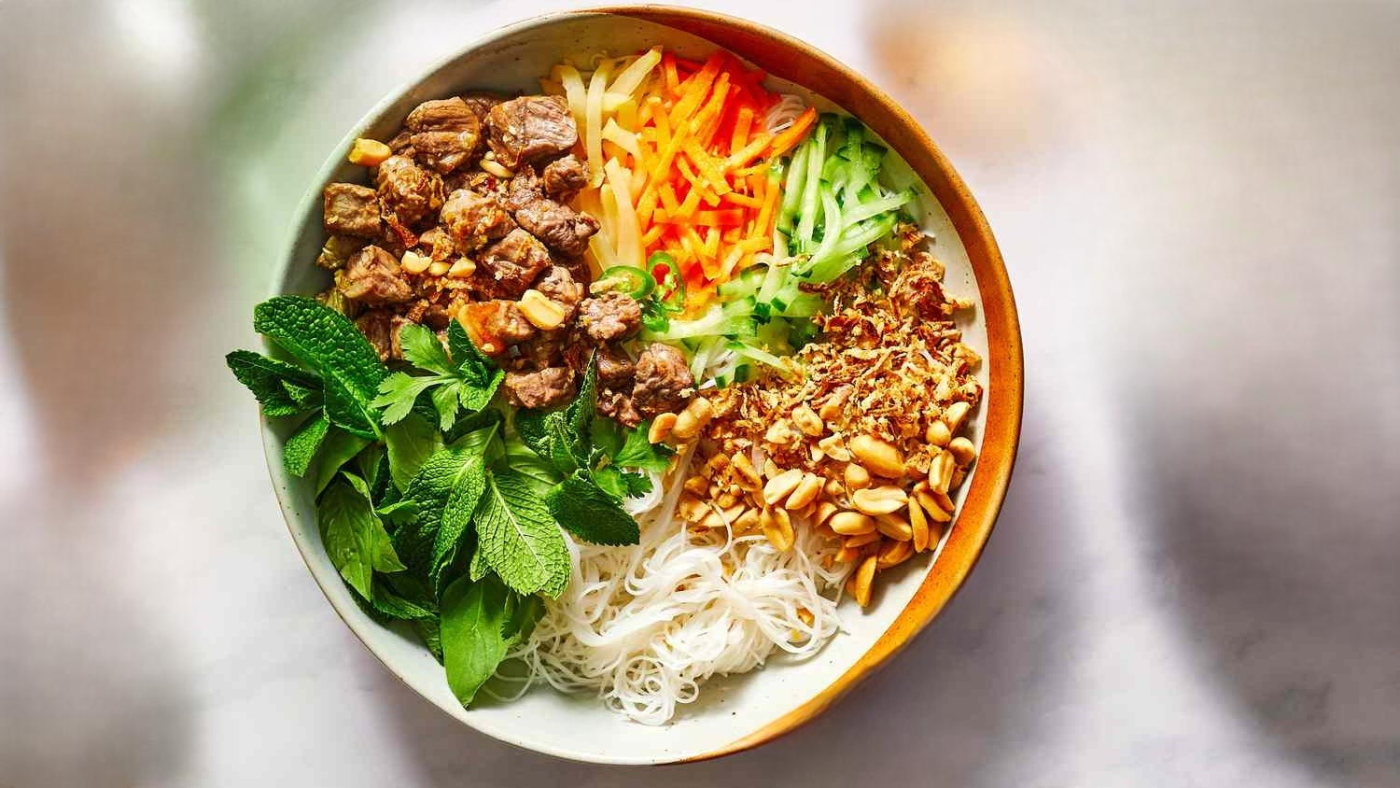
7. Banh Nam – Flat Rice Dumplings
Wrapped in banana leaves, Banh Nam represents the elegance of Hue royal cuisine. These flat rice dumplings contain a savory mixture of shrimp and pork, steamed to perfection until the wrapper becomes translucent.
The preparation requires skill and patience:
- Rice flour is mixed with tapioca starch for the perfect texture
- Fresh banana leaves must be cleaned and softened
- The filling is carefully seasoned and pre-cooked
- Each dumpling is wrapped precisely to ensure even cooking
Served with sweet fish sauce infused with ginger, Banh Nam offers a delicate flavor that exemplifies the subtlety of Central Vietnamese cuisine.
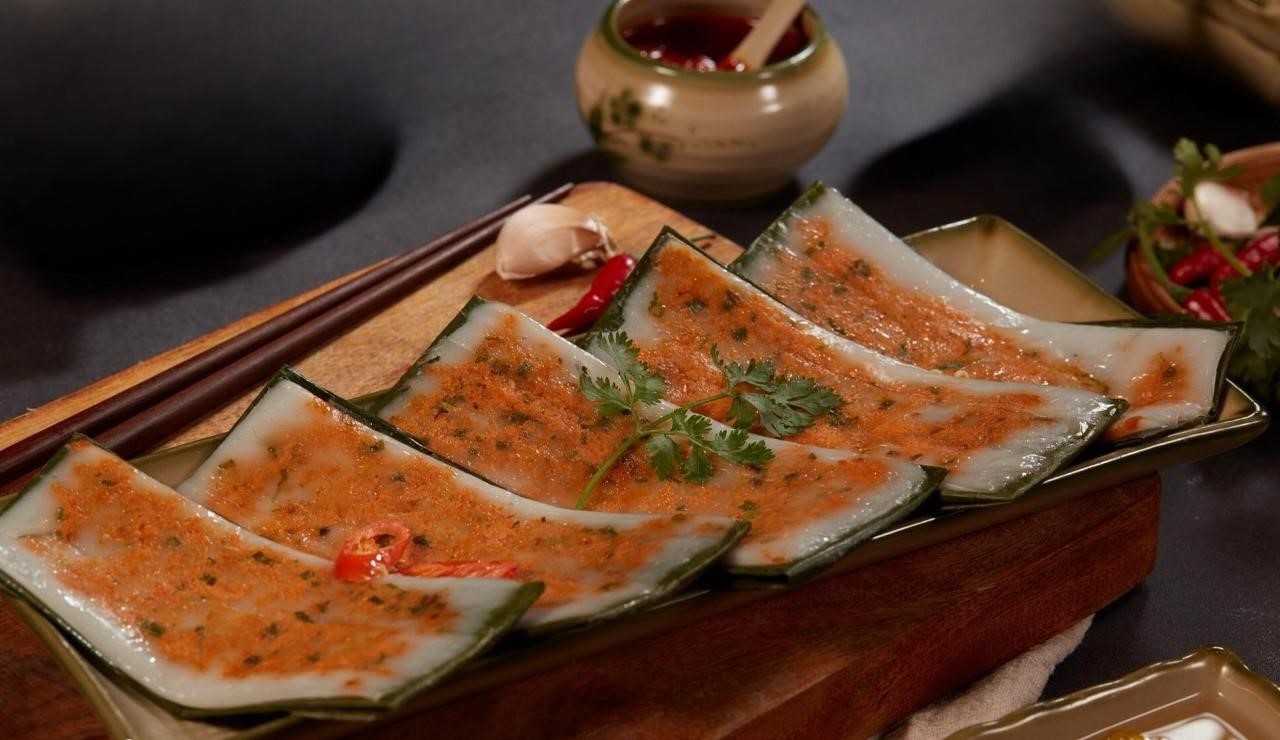
8. Bánh Lọc: Tapioca Dumplings
Bánh Lọc is a small, clear-looking, chewy tapioca dumplings in Vietnamese cuisine that can be eaten as appetizers or small snacks, is usually filled with shrimp and pork.
Bánh Lọc is a type of steamed tapioca cake made from tapioca starch, water, and salt. The filter cake is translucent and has a slightly sticky texture. It is made from shrimp and pork, or green beans, adding a savory or sweet flavor to the dish. Bánh Lọc is eaten with a dipping sauce made from fish sauce, sugar, vinegar, garlic, and chili, adding to the fragrant and spicy flavor of the dish.
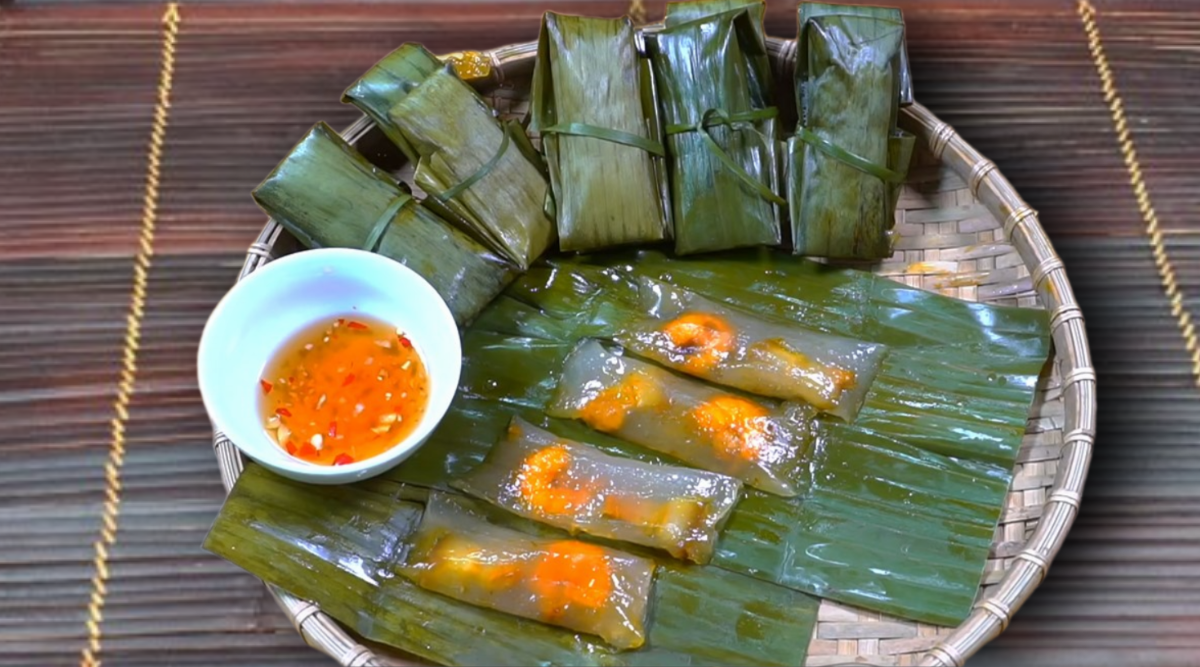
9. Bánh Ướt Thịt Nướng: Grilled Pork Rice Paper Rolls
Bánh Ướt Thịt Nướng is a delicious snack consisting of wet rice paper rolls with grilled pork. The pork is marinated with garlic, sugar, fish sauce, lemongrass and grilled over charcoal until tender and golden brown. The pork is served with wet rice paper, lettuce, herbs, cucumber, carrots and green bananas, which are used to wrap the pork into rolls.
The rolls are dipped in a sauce made from fermented soy sauce, peanut butter, sugar, vinegar and chili, giving the dish a delicious and spicy flavor. Bánh Ướt Thịt Nướng is a fun and interactive dish, allowing you to roll the rice paper and enjoy the contrast of textures and flavors
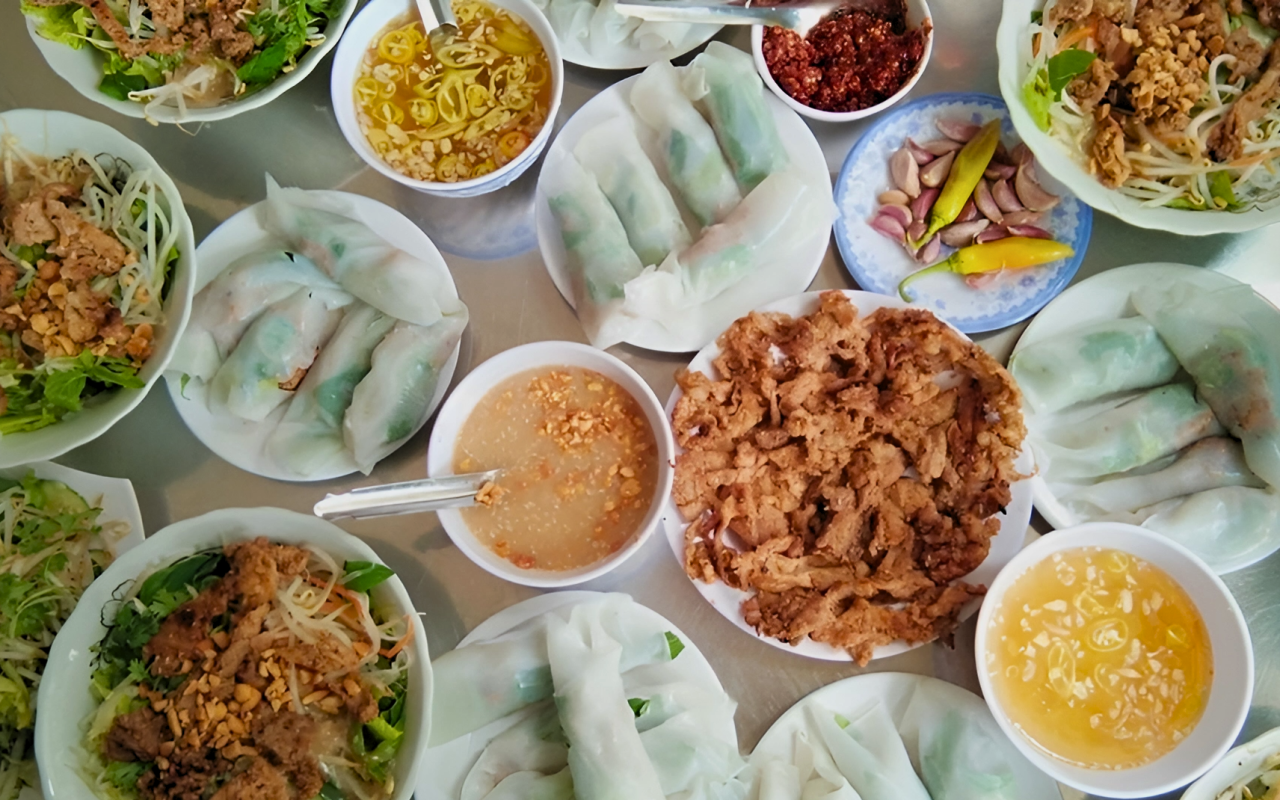
10. Che Hue – Royal Sweet Soups
No exploration of Hue food is complete without sampling the city’s famous sweet soups. Che Hue encompasses dozens of varieties, each more colorful and creative than the last. These desserts originated in the royal palace, where presentation was as important as taste.
“In Hue, we don’t just eat with our mouths, we eat with our eyes first.” – Traditional saying
Popular varieties include:
- Che bap – sweet corn pudding with coconut milk
- Che chuoi – banana in coconut milk with tapioca pearls
- Che bot loc – translucent dumplings with shrimp and pork
- Che long nhan – longan fruit in sweet syrup
Visit Me Xung on Hung Vuong Street, where three generations have been perfecting these sweet treats.
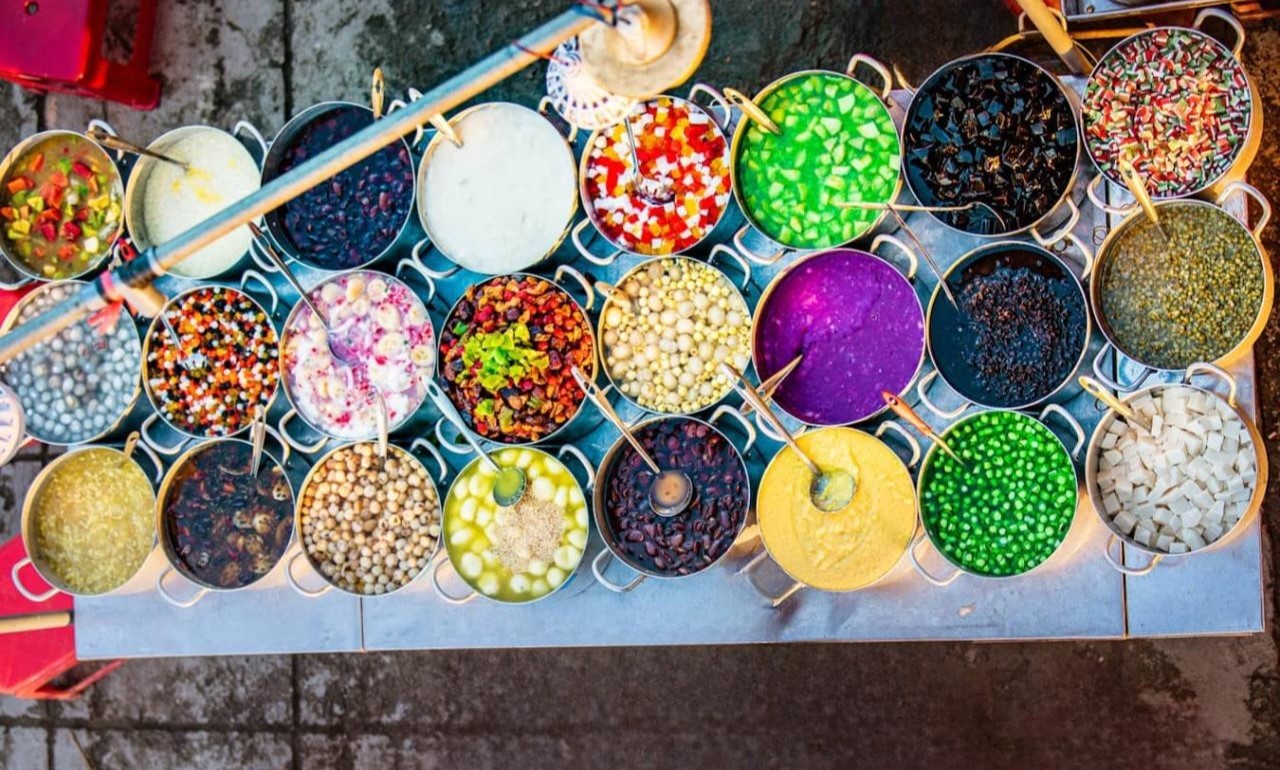
Planning Your Hue Food Adventure
To fully experience Hue cuisine, I recommend staying at least 3-4 days in the city. This allows time to explore both restaurant dining and street food culture. Consider booking a guided food tour for your first day to get oriented with local specialties and hidden gems.
Best times to explore Hue’s food scene:
- Early morning (5-8 AM): Street breakfast culture, fresh Bun Bo Hue
- Late afternoon (4-6 PM): Snack time for Banh Beo and Banh Khoai
- Evening (6-9 PM): Night markets and grilled specialties
Remember that many of Hue’s best food spots are small family operations that close when they sell out, so arriving early ensures you won’t miss out.
Essential Tips for Enjoying Hue Food
Based on years of exploring Vietnamese cuisine, here are my top recommendations for making the most of your Hue food experience:
- Embrace the spice: Hue food is spicier than other Vietnamese regional cuisines. Start mild and work your way up.
- Try everything with herbs: Fresh herbs aren’t garnish – they’re essential flavor components.
- Visit local markets: Dong Ba Market offers the most authentic food experience in Hue.
- Learn basic Vietnamese food terms: Simple phrases go a long way with local vendors.
- Stay hydrated: The combination of spice and tropical heat means plenty of water is essential.
For more detailed information about Vietnamese cuisine and culture, check out resources from Google’s Vietnamese food guides or culinary experts at Serious Eats.
Why Hue Food Matters
Hue cuisine represents more than just delicious food – testament to the creativity of its people. Each dish tells a story, whether it’s the royal origins of elaborate presentations or the ingenious use of simple ingredients during harder times.
The attention to detail, balance of flavors, and emphasis on fresh ingredients make Hue food a must-experience aspect of any Vietnam journey. Whether you’re a casual food lover or a serious culinary explorer, the dishes of Hue will challenge your palate and expand your understanding of Vietnamese cuisine.
Ready to embark on your own Hue food adventure? Start planning your Vietnam tour today and prepare for a culinary journey that will create lasting memories. From the first spoonful of Bun Bo Hue to the last bite of sweet Che, Hue’s flavors will captivate your senses and leave you planning your return before you’ve even left.


